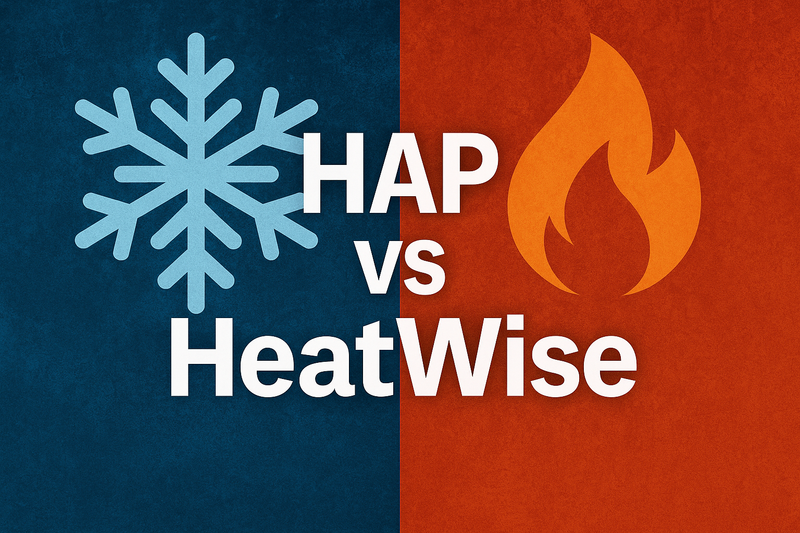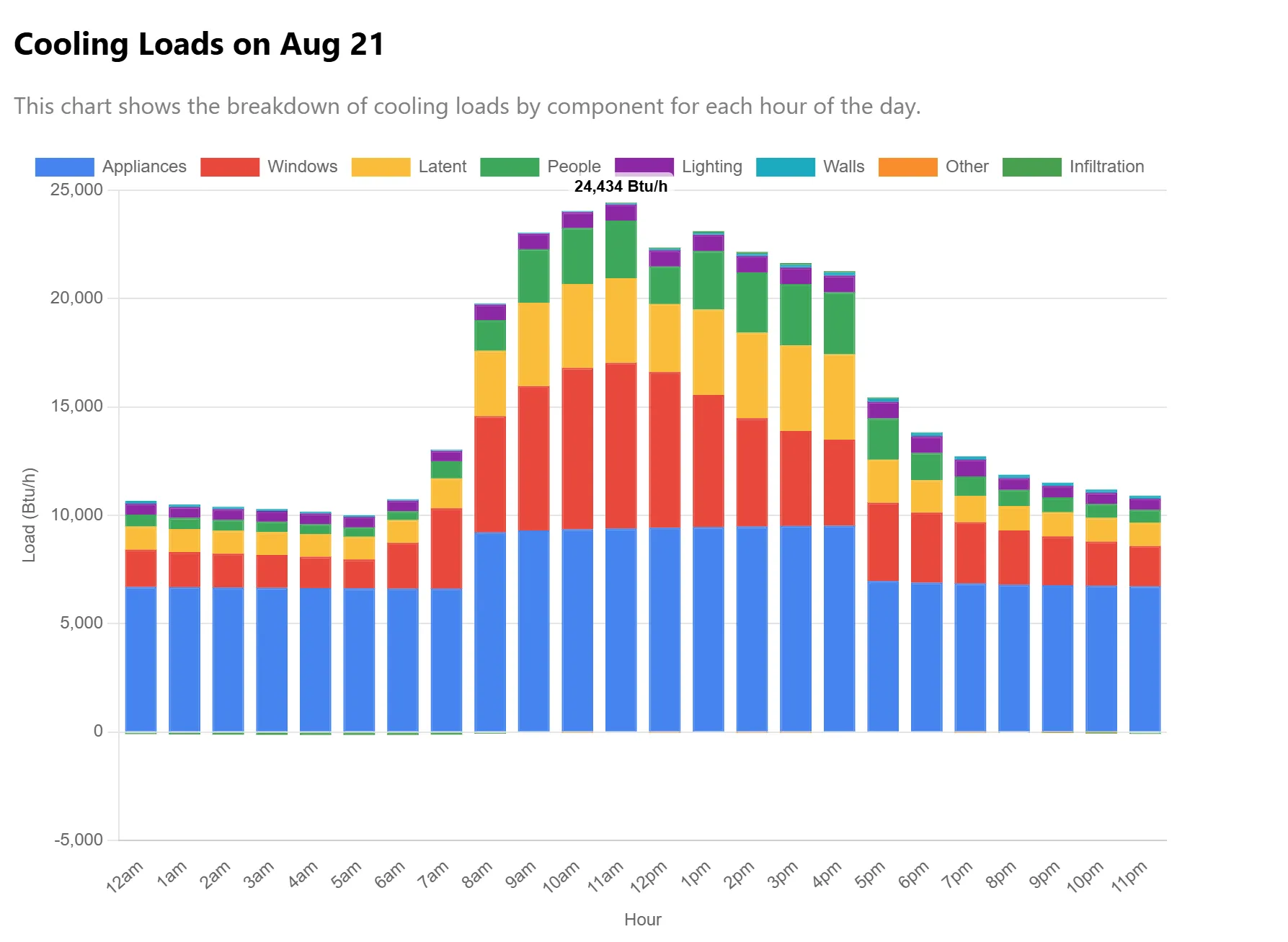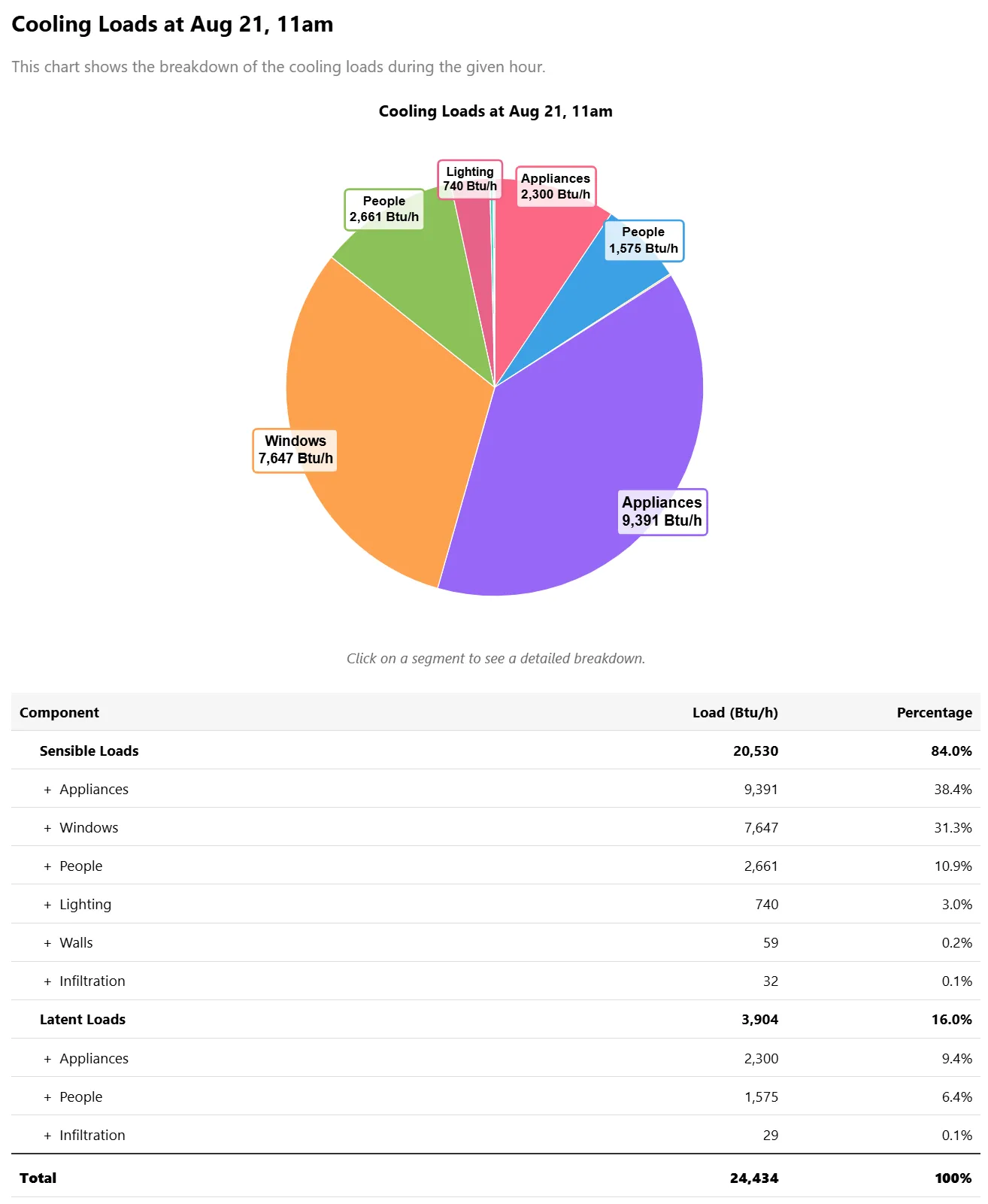
Hourly Analysis Program (HAP) by Carrier has been around for decades and has become an industry standard software application for HVAC Load Calculations. One of the questions we frequently get is how HeatWise compares to HAP, and what the pros and cons of each application are.
HAP has been around for decades and is now on its 6th generation, known as HAP V6. It uses the heat balance (HB) method for its calculations, which is the most mathematically complete method, allowing it to be used for energy modelling in addition to load calculations. A detailed description of load comparison methods can be found at our blog post here.
HeatWise-HVAC was established in 2024, and version 1 of HeatWise was launched with it. It uses the radiant time series (RTS) method to perform load calculations, which is a simplified form of the HB method, and an improvement over other applications that use the cooling load temperature difference (CLTD) and Manual J methods.
Due to the different calculation methods used by the two applications, HAP will tend to return more robust and accurate results. However, HeatWise results will be nearly as accurate due to the general accuracy of the RTS method.
In both cases, the highest risk of error or faulty results lies in user error, improper building modelling, or poor construction quality causing building performance to be different from expectations (i.e. higher infiltration, thermal bridging, etc.).
In this regard, HeatWise may be able to prevent errors better than HAP, since HeatWise uses simpler input methods and provides intermittent results during the building material modelling and space creation. Below are example pictures of calculations being displayed as a space is being built.


In HAP, spaces must be created in a graphic display or imported from Revit. When importing from Revit, errors may occur from incorrect or incomplete building material data within the model that were not overridden or corrected. If being built in the graphic display, the overcomplexity may result in issues or omissions of important details. For an in-depth comparison between HAP, HeatWise, and Chvac, see our blog post on HVAC Software Comparison.
Both applications offer a 60-day free trial to all first time users, however the sign up process is a little more complicated through HAP compared to HeatWise. After the free trial, HeatWise only requires credit card and billing information, which is as simple as making any other online payment. It is based on a monthly subscription, which can be cancelled at any time, and the commitment does not exceed one month. After the free trial for HAP, a contract much be signed and payment for a full year of usage. A full-year commitment is required for each following year, and the cancellation process can be quite involved.
Total costs (USD):
| Software | Annual Cost | Monthly Cost |
|---|---|---|
| HAP | $1,995 | $166.25 |
| HeatWise | $480 | $40 |
As shown in the table above, HeatWise can save users over 75% with a much lower payment commitment.
HAP and HeatWise are structured differently in many ways. In HAP, a model of the building must be fully built by defining the entire building envelope. Once the building is designed, the internal partitions must be laid out. Once the partitions are laid out, the building must be split into different systems and zones. Each space then gets a space type applied to it, which defines the internal loads.
In HeatWise, components such as wall and window types are defined, then spaces are built by using these components and defining the internal loads. Systems can then be built by adding zones and adding spaces to zones as necessary. This does not involve full building modelling.
Both applications have been shown to provide similar results, indicating that equipment sizing and duct design should be fairly accurate regardless of the choice of software.
For larger companies with consistent access to Revit models for import and who require energy modelling capability, HAP may be the better choice. HAP can provide highly accurate HB method calculations and allow for more diverse systems.
HeatWise may be the better option for companies that frequently work on smaller projects and tenant fit-ups, where a Revit model may not be available, or a full building model is unnecessary. HeatWise is also likely to be a better option for start-up engineering firms and self-employed engineers who have tighter budgets and require quicker access to tech support.